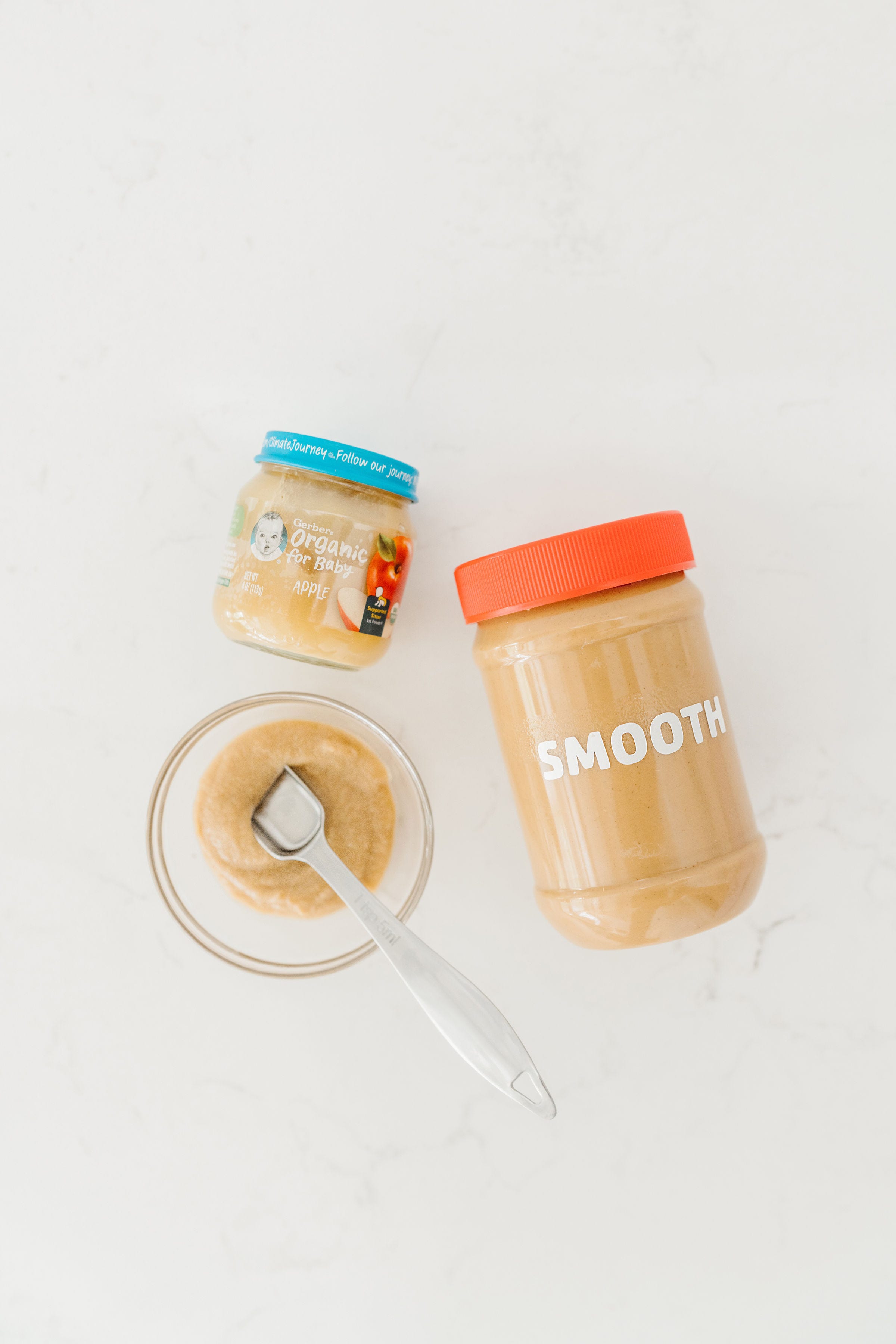

The Whens, Whys and Hows of Introducing Peanut to Babies: Getting Started With a Common Food Allergen
If you’re a parent, you know that a peanut allergy is a serious topic. We get it. Introducing peanuts to your child can be nerve-wracking, especially if you have or are related to someone with a peanut allergy. But rest assured, we’re here to help walk you through it.
The good news? Introducing peanut-containing foods in the first year of a baby’s life is now recommended and may help reduce the risk of developing an allergy to peanuts in some infants, according to the Dietary Guidelines for Americans.
So don’t worry! When your doctor gives you the OK to try peanuts with your baby, we are here to support you with information and answer questions.
When to Introduce Peanuts to Babies:
Today, the American Academy of Pediatrics recommends that children be introduced to common food allergens — such as peanuts — around the time baby is introduced to solid foods and continue to offer them in the diet, especially for children at a higher risk for having a peanut allergy. (This is a reversal from advice issued in 2000, which suggested that high-risk kids avoid peanuts until age 3.)
Always talk to your doctor about this topic. Your doctor can determine if your child is at a higher risk for having a peanut allergy and guide you about when and how to introduce peanuts. Also, if your baby has other known food allergies or very bad eczema (dry, scaly patches of skin), ask your doctor if your baby should have an allergy test or see a pediatric allergist. Be sure to follow your doctor’s advice!
How to Introduce Peanuts to Babies:
When introducing peanuts or any new food allergen for the first time, you should:
- Get the go ahead from your doctor
- Choose a safe location—either at home or in a doctor’s office—and a time when you are available to spend the rest of the day with your child to watch for any reaction.
- Only offer a little of the peanut food (more on that below), and don’t mix with other common allergens that your baby has not yet tried (such as cow’s milk yogurt). For babies at higher risk, your doctor may recommend you continue giving your baby peanut foods regularly (for example, 6-7 grams of peanut protein given over three or more feedings per week). Be sure to ask your doctor about how to continue exposing your child to peanuts.
What Peanut Form to Introduce Peanuts to Babies:
Peanuts, peanut butter and other forms of peanuts are serious choking hazards for infants and young children so it is important to make sure the form of peanut you choose is developmentally appropriate for the baby. It’s important to never give your baby whole peanuts, crushed peanuts, regular (un-thinned) peanut butter or crunchy peanut butter. These are serious choking hazards for babies and young children.
According to Gerber Safety and Developmental Feeding Expert Sarah Smith-Simpson, thinned peanut butter, thinned to a puree consistency, is appropriate for infants for this purpose. To thin smooth peanut butter, “you need to use hot liquids,” she notes. “Also, peanut butter tends to clump. You have to keep stirring until the mixture is smooth and completely blended —which takes some time. Be patient and keep stirring until the mixture runs off the spoon! The final mixture should be thicker than water or milk.”
To thin smooth peanut butter, follow these steps:
- Combine 1 teaspoon (tsp.) of all natural or smooth regular peanut butter + 2 tsp. warm water until smooth and runs off a spoon
OR
- Combine 1 tsp. smooth regular peanut butter + 3 tsp. Gerber 1st Foods® Natural Apple puree (warmed) until smooth and runs off a spoon
For both recipes, it is normal for a lot of stirring to make sure the peanut butter is completely thinned - at least 30 seconds. Since you’re starting with a warm liquid, be sure to check the temperature before you feed it to the baby. Then, offer a small serving of the thinned peanut butter puree (e.g., enough to coat the tip of a baby spoon) and watch your baby for 15-20 minutes. If you don’t see any symptoms, slowly give the remaining thinned peanut butter mixture, watching for any signs of an allergic reaction.






What an Allergic Reaction Looks like and What to Do About It:
So what, exactly, are you looking for? Signs your baby is having a reaction include:
- Crying after eating the peanut food, especially if it becomes hoarse or shrill
- Rashes, hives, or other skin irritations
- Vomiting
- Diarrhea
- Sneezing, coughing, or congestion
Remember, an allergic reaction can happen up to two hours after a food is introduced. If you see any of these signs, call your pediatrician. For symptoms such as difficulty breathing, call 9-1-1 immediately.
If your baby does not have a reaction, it is recommended to continue to include peanuts regularly. Our recipe provides 1g peanut protein, which may be offered daily or as instructed by your doctor.
The More You Know
Remember, you’re not alone in introducing peanuts. We’ve collected some of the available expert information on food allergies. You can find lots of details on what you should know as you start planning to introduce peanuts and other common allergens. You’ve got this!
- What is a Food Allergy
- How Babies Develop Food Allergies
- How to Introduce Common Food Allergens | Gerber
- Baby Food Allergies: A Parent's Guide
- Cow's Milk Allergies in Babies
- Nutrition for Babies with Food Allergies
- Nutrition for Toddlers with Food Allergies





